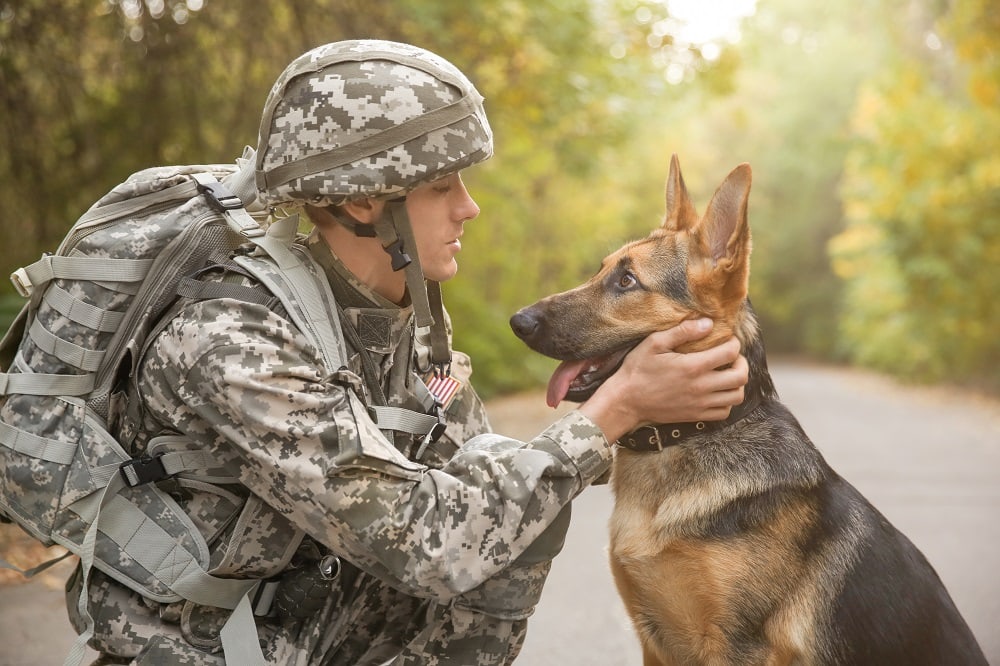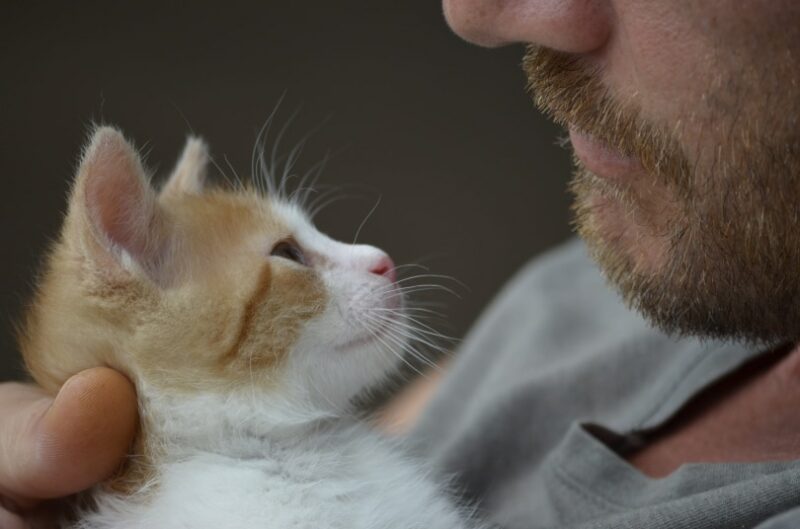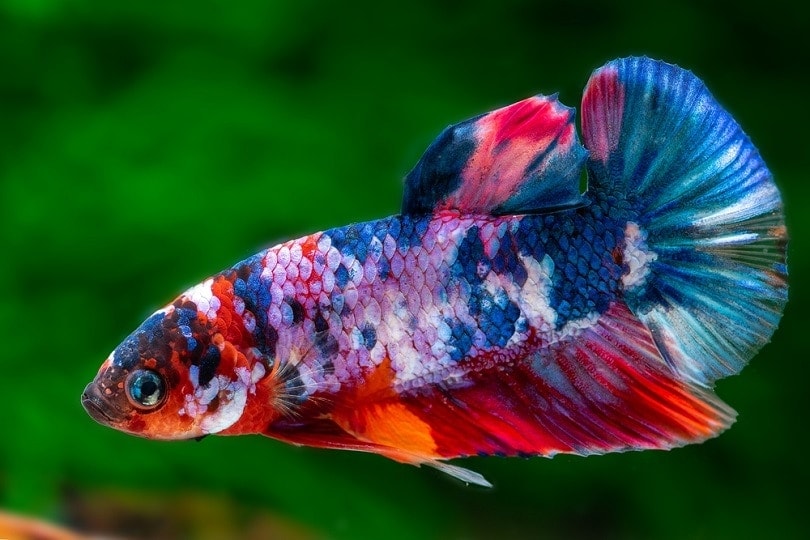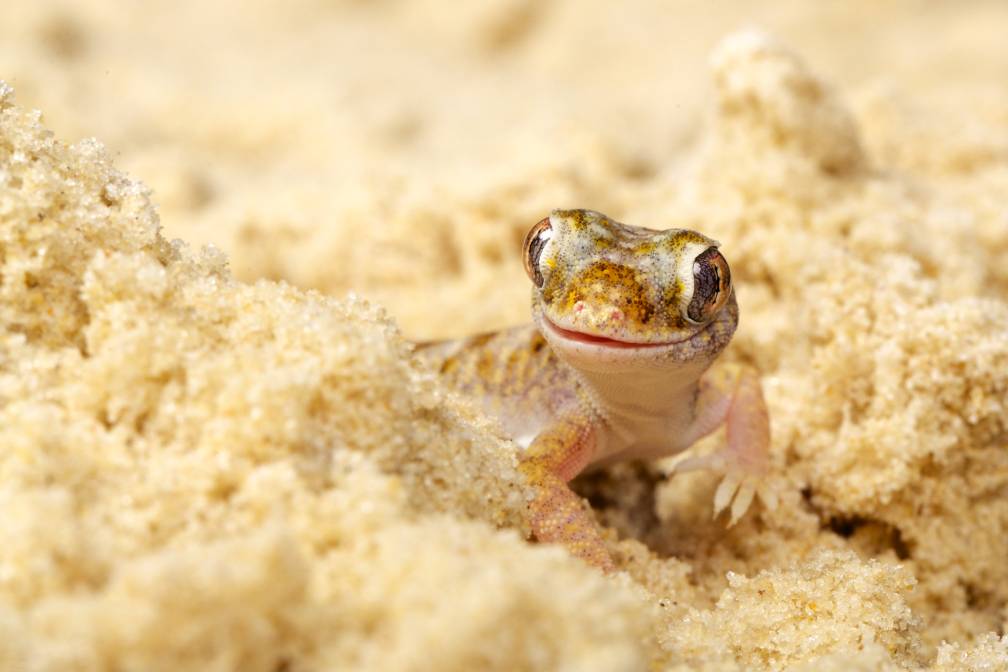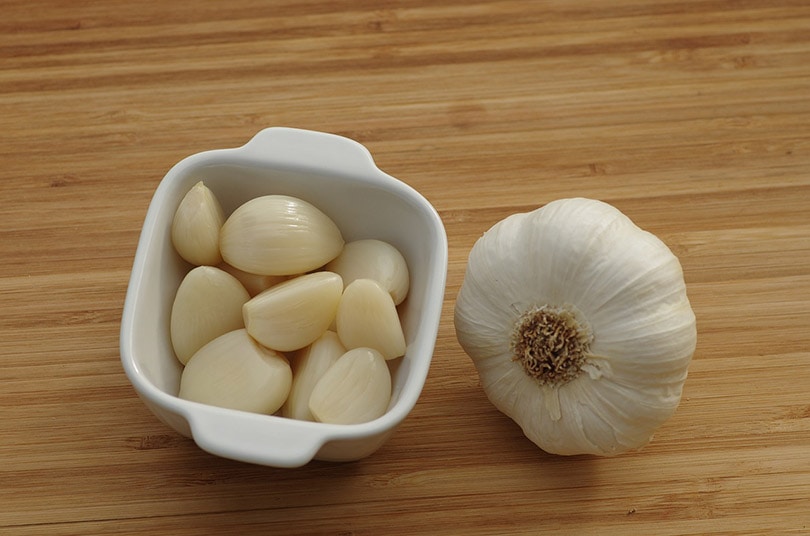
Click to Skip Ahead
If you have a cat or dog at home and are searching for a natural way to get rid of fleas, you may wonder if garlic can do the trick. There’s currently no scientific evidence that garlic is an effective veterinary flea treatment, and more importantly, it’s a member of the Allium family and, therefore, actually toxic to cats and dogs.1 Many veterinarians recommend sticking with prescribed anti-flea products that have been tested for effectiveness and safety when treating pets.2
How Garlic Affects Pets
Members of the Allium family, including garlic, onions, chives, and leeks, are toxic to cats and dogs. Dried products are more potent than fresh ones, and garlic is generally considered the most problematic of the bunch; it’s five times stronger than regular onions.
Felines
Cats are particularly vulnerable to garlic poisoning due to their smaller body sizes. A cat weighing 10 to 12 pounds can experience signs of Allium toxicity after consuming about 1/2 teaspoon of chopped fresh garlic or 1/8 teaspoon of garlic powder. The signs of garlic poisoning include lack of appetite, pale gums, fast breathing, and gastrointestinal difficulties such as vomiting and diarrhea.
Don’t wait for signs to develop if you suspect your cat has consumed garlic; reach out to your veterinarian, explain the situation, and follow their instructions just to be safe.

Canines
Garlic is also toxic to dogs but generally causes fewer problems than cats. A 25-pound dog that managed to eat 50 grams of garlic (about 10 cloves) would likely need treatment. Certain breeds, including Japanese Chins, Akitas, and Shiba Inus, are more sensitive to garlic’s active ingredients.
Signs of garlic poisoning in dogs include lethargy, pale gums, lack of coordination, and a fast heart rate. Average-sized dogs that get hold of one clove are likely to be just fine, but speak with your veterinarian and get solid advice regarding what to do if your dog consumes any amount of garlic.
What’s the Theory Behind Giving Pets Garlic to Ward Off Fleas?
The theory claims that fleas don’t like the taste and smell of garlic and that consuming it will change how pets taste and smell enough to cause fleas to think twice about taking a bite. Rubbing garlic on pets is supposed to work essentially the same way. However, no scientific evidence supports the theory, and you should never feed or rub garlic on cats or dogs, as they will still ingest it when grooming.

How Do Cats and Dogs Get Fleas?
Dogs and outdoor cats can catch fleas in several ways, including from other animals and by walking through environments fleas love to hang out in, like tall grass and leaf piles. Owners can also bring them inside on their socks and pants legs, which can transmit the pests to indoor cats.
Dogs can bring home fleas and pass them on to resident cats, and vice versa. Pets can also encounter fleas on visits to places frequented by animals, such as veterinary offices and grooming salons.
What Do Fleas Look Like?
Fleas are 1/16 of an inch long and resemble black specs. They’re relatively flat, have three sets of legs, and like to congregate close to tails, groins, and armpits. A flea comb can make it easy to find fleas in your pet’s coat. They can’t fly, but they can really jump!
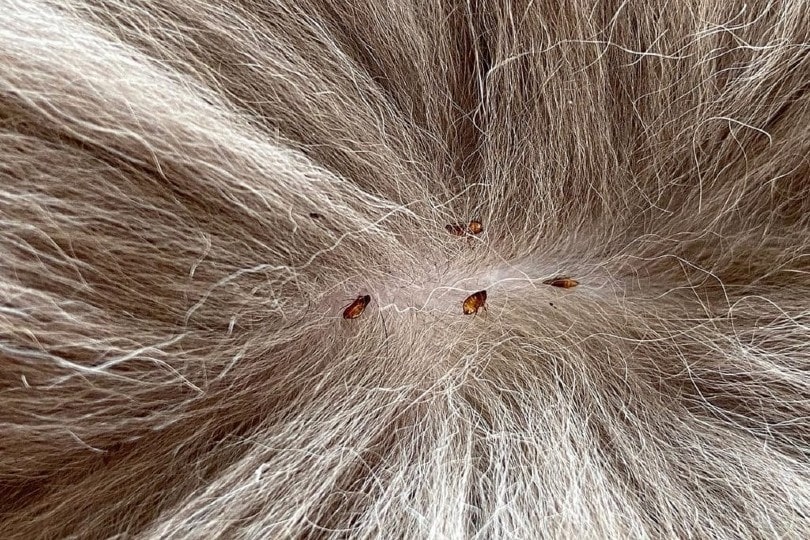
What Are Signs a Pet May Have Fleas?
Biting and scratching often indicate flea infestations in dogs and cats. Head shaking, ear scratching, and hair loss are also commonly seen. Dogs sometimes develop scabs and marks in response to flea bites, and both cats and dogs may get a thinking coat and scabs around the base of their tail and back legs if they are particularly sensitive to fleas.
How Are Fleas Treated?
Getting rid of fleas generally requires a two-pronged approach; you’ll need to treat your pet and kill fleas and eggs hiding in your home.
Treating Your Pet
While it’s possible to manage fleas using a combination of natural methods such as regular flea combing and bathing, they won’t eliminate the pests, are often time-consuming, and require repeat applications to even make a dent in the problem. Vet-approved flea treatments are the best products to deal with fleas since they are subject to testing for safety and have been proven effective.
Speak with your veterinarian and get advice about the best product for your pet’s needs. Topical treatments are effective, and most work for up to 3 months. Canine-specific flea treatments should never be used on cats since many contain permethrin, which is toxic to cats.

Treating Your Home
Daily vacuuming is essential for getting rid of fleas and their eggs. Carpeted areas and sofas often require more attention. It’s best to throw the vacuum bag away and dump the canister outside to keep fleas from re-infesting your home.
All pet bedding should be frequently washed in the highest temperatures possible. Pillows and comforters where pets like to sleep should also be laundered.
Getting rid of mulch piles and clearing fallen leaves and branches can make outdoor environments less inviting for fleas. However, you’ll need to call a pest control technician to treat your home and yard if you have a severe infestation.
Conclusion
No scientific study has proved that garlic works as a flea treatment, and there are plenty of good reasons to avoid giving your pet garlic. It’s toxic to dogs and cats, but cats are more sensitive to garlic’s effects than dogs and can become sick after consuming relatively small amounts.
Commercial products tested for efficacy and safety generally get rid of fleas quickly and efficiently, and there are many options to choose from, including incredibly easy-to-use topical treatments and shampoos. Cats should only use feline-specific flea products since many products made for dogs contain permethrin.
Featured Image Credit: MaisonBoutarin, Pixabay


